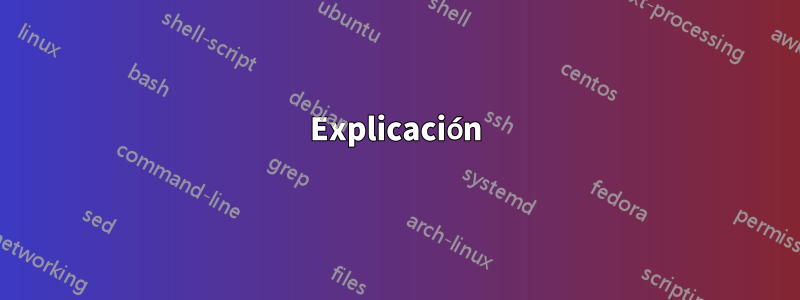
Entonces, después de labrillante solución de @Symbol1A mi última pregunta, tengo una nueva sobre el mismo tema. Con el código propuesto, que cambia el comportamiento de \pgfplotsplothandlerquiver@vis@path, point metaparece que ya no funciona...
Esto tiene efectos sobre el mapped colory\pgfplotspointmetatransformed
\documentclass[border=9,tikz]{standalone}
\usepackage{pgfplots}\pgfplotsset{compat=newest}
\usetikzlibrary{arrows.meta}
\begin{document}
\makeatletter
\def\pgfplotsplothandlerquiver@vis@path#1{%
% remember (x,y) in a robust way
#1%
\pgfmathsetmacro\pgfplots@quiver@x{\pgf@x}%
\pgfmathsetmacro\pgfplots@quiver@y{\pgf@y}%
% calculate (u,v) in relative coordinate
\pgfplotsaxisvisphasetransformcoordinate\pgfplots@quiver@u\pgfplots@quiver@v\pgfplots@quiver@w%
\pgfplotsqpointxy{\pgfplots@quiver@u}{\pgfplots@quiver@v}%
\pgfmathsetmacro\pgfplots@quiver@u{\pgf@x-\pgfplots@quiver@x}%
\pgfmathsetmacro\pgfplots@quiver@v{\pgf@y-\pgfplots@quiver@y}%
% move to (x,y) and start drawing
{%
\pgftransformshift{\pgfpoint{\pgfplots@quiver@x}{\pgfplots@quiver@y}}%
\pgfpathmoveto{\pgfpointorigin}%
\pgfpathlineto{\pgfpoint\pgfplots@quiver@u\pgfplots@quiver@v}%
}%
}%
\begin{tikzpicture}
\begin{axis}[axis equal]
\addplot[
point meta=x,
quiver={u=x,v=y,
after arrow/.code={
\relax{% always protect the shift
\pgftransformshift{\pgfpoint{\pgfplots@quiver@x}{\pgfplots@quiver@y}}%
\node[below right]{\tiny\color{mapped color}\pgfplotspointmetatransformed};
}
}
},
->,
samples=10,domain=-1:1
] {x*x-1};
\addplot[
point meta=x,
quiver={u=x,v=y,
every arrow/.append style={%
-{Latex[scale length={max(0.1,\pgfplotspointmetatransformed/1000)}]},mapped color
},
},
->,
samples=10,domain=-1:1
] {x*x};
\end{axis}
\end{tikzpicture}
\end{document}
Para la versión sin cambios, la escala y el color funcionan, para la versión modificada ninguna de las dos cosas funciona.
Para completar, el pgfplotscódigo original que se reemplaza (¿¡¿No puedo ver nada sobre los metavalores aquí?!?)
\def\pgfplotsplothandlerquiver@vis@path#1{%
\pgfpathmoveto{#1}%
\pgfplotsaxisvisphasetransformcoordinate\pgfplots@quiver@u\pgfplots@quiver@v\pgfplots@quiver@w
\pgfpathlineto{%
\pgfplotsifcurplotthreedim{%
\pgfplotsqpointxyz\pgfplots@quiver@u\pgfplots@quiver@v\pgfplots@quiver@w
}{%
\pgfplotsqpointxy\pgfplots@quiver@u\pgfplots@quiver@v
}%
}%
}%
Respuesta1
Lo siguiente funciona para mí.
\documentclass[border=9,tikz]{standalone}
\usepackage{pgfplots}\pgfplotsset{compat=newest}
\usetikzlibrary{arrows.meta}
\begin{document}
\makeatletter
\def\pgfplotsplothandlerquiver@vis@path#1{%
% remember (x,y) in a robust way
#1%
\pgfmathsetmacro\pgfplots@quiver@x{\pgf@x}\global\let\pgfplots@quiver@x\pgfplots@quiver@x%
\pgfmathsetmacro\pgfplots@quiver@y{\pgf@y}\global\let\pgfplots@quiver@y\pgfplots@quiver@y%
% calculate (u,v) in relative coordinate
\pgfplotsaxisvisphasetransformcoordinate\pgfplots@quiver@u\pgfplots@quiver@v\pgfplots@quiver@w%
\pgfplotsqpointxy{\pgfplots@quiver@u}{\pgfplots@quiver@v}%
\pgfmathsetmacro\pgfplots@quiver@u{\pgf@x-\pgfplots@quiver@x}%
\pgfmathsetmacro\pgfplots@quiver@v{\pgf@y-\pgfplots@quiver@y}%
% move to (x,y) and start drawing
{%
\pgftransformshift{\pgfpoint{\pgfplots@quiver@x}{\pgfplots@quiver@y}}%
\pgfpathmoveto{\pgfpointorigin}%
\pgfpathlineto{\pgfpoint\pgfplots@quiver@u\pgfplots@quiver@v}%
}%
}%
\begin{tikzpicture}
\begin{axis}[axis equal]
\addplot[
point meta=x,
quiver={
u=x,v=y,
every arrow/.append style={%
-{Latex[scale length={max(0.1,\pgfplotspointmetatransformed/1000)}]},mapped color
},
after arrow/.code={
\relax{% always protect the shift
\pgftransformshift{\pgfpoint{\pgfplots@quiver@x}{\pgfplots@quiver@y}}%
\node[below right]{\tiny\color{mapped color}\pgfplotspointmetatransformed};
}
}
},
->,samples=10,domain=-1:1
]{x*x-1};
\addplot[
point meta=x,
quiver={
u=x,v=y,
every arrow/.append style={%
-{Latex[scale length={max(0.1,\pgfplotspointmetatransformed/1000)}]},mapped color
},
},
->,samples=10,domain=-1:1
]{x*x};
\end{axis}
\end{tikzpicture}
\end{document}
Explicación
La principal diferencia de este código y el de su pregunta anterior es que
\pgfmathsetmacro\pgfplots@quiver@x{\pgf@x}
\pgfmathsetmacro\pgfplots@quiver@y{\pgf@y}
se convierte en
\pgfmathsetmacro\pgfplots@quiver@x{\pgf@x}\global\let\pgfplots@quiver@x\pgfplots@quiver@x%
\pgfmathsetmacro\pgfplots@quiver@y{\pgf@y}\global\let\pgfplots@quiver@y\pgfplots@quiver@y%
lo que sugiere que el error se debe a una agrupación adicional. Pero ¿por qué hay agrupaciones adicionales? Bueno, porque cuando pgfplots encuentra
\draw[/pgfplots/quiver/every arrow]...
las opciones del \drawes, por convención, afectando sólo a este\draw . Por lo tanto TikZ pondrá esto \drawen un grupo. Y como \pgfplotsplothandlerquiver@vis@pathde este modo está incluido en un grupo, no se puede ver \pgfplots@quiver@xdesde fuera (en particular desde after arrow).
Por cierto, el #1del \pgfplotsplothandlerquiver@vis@pathes, en términos generales,
\global\pgf@x=\pgf@x
\global\pgf@x=\pgf@y
Y el análisis anterior muestra la necesidad de esto.




